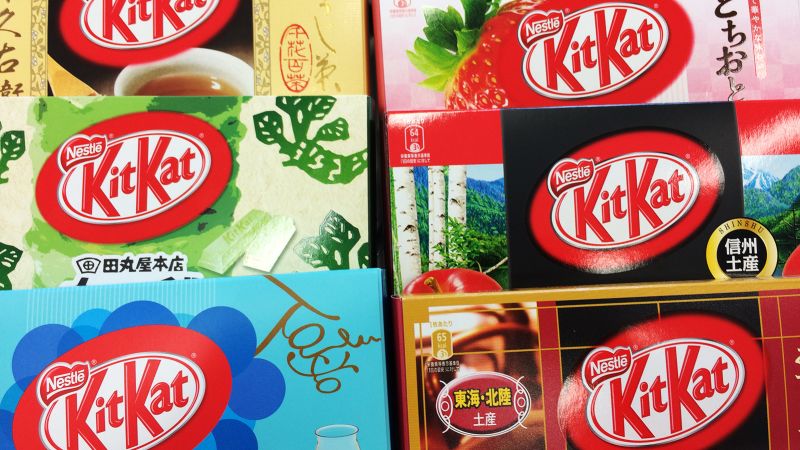If you stroll through the real or virtual aisles of a Japanese store, you might find Kit Kats in flavors like salt lemon, caramel pudding, whole grain biscuit, melon, and milk tea. Good luck finding those at Target or Walmart in the US.
Kit Kat aficionados know that to find the most interesting varieties, you have to shop outside of the US or go to specialty stores that carry imported goods. Why? Because Kit Kat is distributed by different companies in the United States and internationally. In the US, Kit Kat is sold by Hershey. In the rest of the world, Nestlé’s in charge.
Kit Kat is the biggest brand in Nestlé’s global confectionary business, according to Chris O’Donnell, who leads Kit Kat for Nestlé globally. “It’s [a] key priority for us,” he said. “We see huge growth potential [for] Kit Kat.” Hershey’s top brand, on the other hand, is Reese’s.
Nestlé has 13 Kit Kat manufacturing sites across the world, O’Donnell said, and uses different recipes for different areas. When Kit Kat develops new flavors, most of them limited-time offers, it’s looking to appeal to local tastes.
In Japan, seasonal flavors have been especially successful.
Globally, most consumers are interested in “crowd-pleasing flavors,” like caramel, O’Donnell said. But in Japan, they “have a very wide appreciation for a much broader flavor profile.”
In 2000, Nestlé launched a strawberry Kit Kat in the country. It was a hit, and since then, the Japanese team has regularly developed seasonal flavors — like chestnut and sweet potato — in addition to regional flavors, like wasabi and roasted tea, only available in certain areas. These offerings are often bought as travel gifts or souvenirs, creating a market unto itself. Over the past few decades, Kit Kat Japan has launched hundreds of flavors.



I really wish we could de-clickbait-ify the title.
Aside from the description having the answer, I’m just going to pretend it’s an onion article.
With the answer being something like “the US doesn’t deserve it” or “people will buy it anyway (and the health crisis is bad enough without new delicious flavors causing regulators to be further on their case), whereas in other countries they need to work a little harder to make sales (they’re a bit too healthy)”
“Think of it like ration chocolate, if it tasted too good you might eat it before you need to” one historian added.